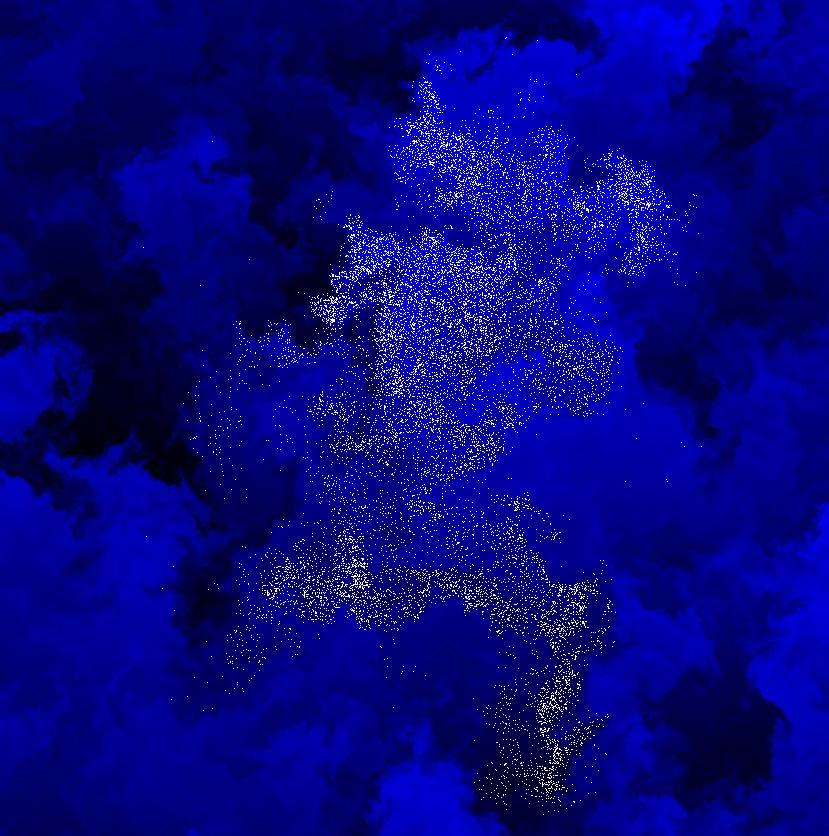| <<< back | microdroplets in turbulent flows |
||
 |
Here is a movie, obtained by DNS, representing the evolution of the turbulent vapour field (in blue -- light blue represents moist regions and dark blue represents dry regions). The white points represent cloud droplets, evolving in this strongly fluctuating environment, which provides a huge variety of conditions broadening the size spectrum. |
||
|
Warm clouds are basically composed by small solid particles (sand, salt, combustion products...), water droplets of very different sizes (radii range from around .001 mm to 2 mm) suspended in a moist air. Embryonic droplets, formed onto the surface of the suspended solid particles, must grow of six orders of magnitude in radius, in order to produce rain. Two growing mechanisms are basically active in warm clouds: condensation and collection. Collection is based on collisions of two droplets which remain toghether - with a high probability - to form a bigger drop (coalescence). It is very efficient, but it requires some large (R > .02 mm) droplets in order to initiate. Therefore immediately after their formation, droplets are not yet large enough to collide. Here condensation is fundamental because it is the only mechanism which can lead droplets to grow. |